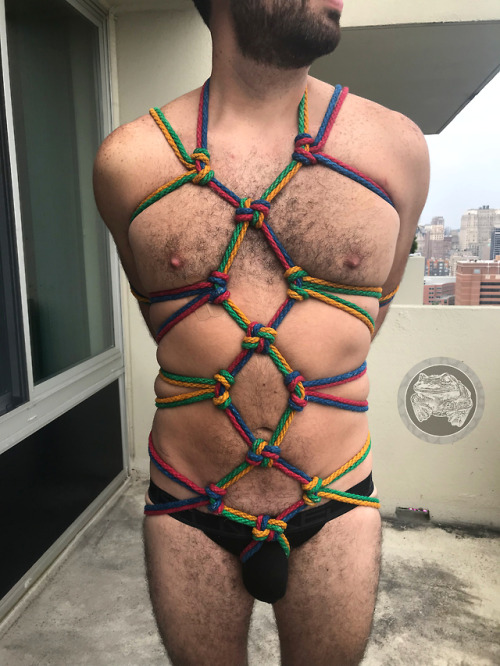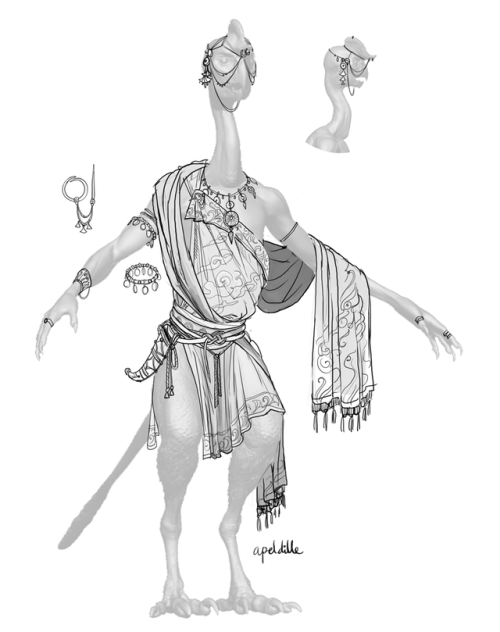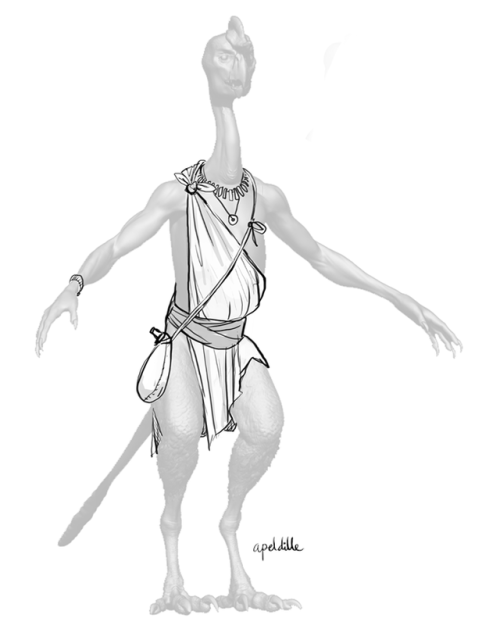#concepting
HEY DOUG HOW DOES A PIECE OF MAGIC ART GET BORN?
The super-short answer is: someone on the creative team writes an art description, and an artist creates the illustration based on that art description. Boom.
But there are a lot more steps than that. Today I’m going to talk about one of the earliest steps in the process of developing Magic art – a step we call toplining – and then we’re going to try our hand at toplining right here on tumblr.
The art of a Magic card is handcrafted especially for that card. The gameplay mechanics of the card come first, and the art is built around that card to bring it to life. The art becomes a visual expression of that particular game piece in the flavor of the Magic multiverse.
The bridge between the card’s art and its mechanical identity is a flavorful idea that we call the concept. The concept is very closely related to the art description, which is a set of instructions for the artist that gets across the concept in visual language. The act of coming up with concepts for new Magic cards and turning them into art descriptions is a process we call concepting, and the person who writes the concepts is the conceptor.
(Yep, it’s “concept” as a verb. Not “conceptualizing.” Nobody got time for that. “Concepting.”)
An example of a concept might be:
A spell that summons a fountain of lava out of the ground.
And an art desciption based on that idea might be:
SETTING: Ixalan
LOCATION: A clearing in the jungle
ACTION: Show tendrils of lava gushing up out of cracks in the ground, twisting into crazy red-hot spirals. In the background, we see the Sun Empire shaman who’s casting this spell, maybe guiding the spell with artful arm gestures.
FOCUS: The lava tendrils should be the main focus here.
MOOD: A showy spectacle of heat and magic
Officially the “concept” is the idea and the “art description” is the expression of the idea, but we often use those terms interchangeably. (“Are you done writing all the concepts for the winter set?” “Almost, just gotta think up two more art descriptions!” Etc.)
Concepting is an extremely exacting skill. It requires a fertile visual imagination, excellent writing and wordcrafting skills, deep knowledge of the worldbuilding and lore of Magic’s settings, and a thorough understanding of Magic gameplay. It requires thinking about what the card does, what visuals from the world guide might match the mechanics, how big or small the power and toughness are, all the visuals you’ve already used in the set or in previous sets, what kinds of motifs or themes or symbols you want to communicate in the setting, what’s possible to illustrate by an artist, how this card relates (or doesn’t) to the story, whether this thing flies, and more.
Concepting a card is weird and fun and deeply hard. And let me tell you, concepting an entire Magic set is VERY weird and VERY fun and VERY DEEPLY HARD. It’s hard enough to come up with a few ideas for an artist to illustrate – the conceptor must come up with up to 250 of them at a time, multiple times per year.
That’s where toplining comes in. Toplining is the process of brainstorming and recording lots of possible visual concepts for each card. Before the set’s conceptor sits down to start writing all the art descriptions, they meet with a team to come up with a list of potential visual ideas for each card, so that the conceptor will be armed with many ideas once they start writing art descriptions for realsies.
That toplining team is different for every set, but it usually consists of (1) the lead conceptor, the person who’ll write all the art descriptions for the set, who is often also the creative lead for that world; (2) the lead art director for the set, who will be in charge of commissioning out the art when the art descriptions are finalized, and who provides useful feedback about the kinds of visual ideas they want to see in the set and on kinds of ideas that will or won’t work; and (3) the lead set designer for the set, who provides useful information about how the card is likely to be used or what audiences it’s meant for.
That toplining team goes through the set card by card. Everybody calls out ideas or looks up possible visuals in the world guide, and the conceptor records the best ideas for future use. Ultimately it’s the conceptor’s responsibility to write excellent art descriptions for all those cards, so it’s on the conceptor to decide what ideas are exciting useful to them and which are just “ehh.”
When I’m the conceptor, I often ask the team questions to help spur ideas. “Okay, this is a common 2/2 flyer in blue. Does this world have drakes? If it’s a drake, what’s special about this one? Is there a way this critter could be tribally relevant in the set, or is this a weirdo one-off? Would this be better as a flying humanoid of some kind, and if so, how are they flying? What’s the weirdest place we could see it flying through? What kind of mage summons this thing, and for what purpose?”And so on. I try to roll past the first two or three ideas to get into more uncharted territory, even if the quick answer feels like the right one. The room answers my questions, often with ideas building on each other, letting us draw out the hottest ideas.
Here’s a pretend transcript for toplining a card:
“Okay, this one is… a green ramp spell. What could this be?”
“Hm. Maybe it’s like a wave made out of land?”
“Isn’t that just Rampant Growth?”
“Or… an elf reaches down and touches the ground.”
“Or she’s touching a tree. And the branches light up with magic.”
“*typing* Okay. But this lets you get any basic land. How does it represent getting multiple colors?”
“The branches create lots of different kinds of fruit?”
“Yeah, and each one’s a different color.”
“*typing* Let’s try another direction. What if this were a natural phenomenon, what would it look like?”
“Maybe it’s a rainstorm, that creates new growth.”
“A rainbow!”
“A rainbow, and where it touches the ground, new life sprouts up.”
“*typing* Cool. Anything else?”
“I keep thinking of how spells like this go in decks that want to cast big creatures.”
“Yeah?”
“So maybe like, it’s whatever happens before big monsters show up. The deep rumble in the ground.”
“What’s the visual form of a deep rumble?”
“Those ominous ripples in the water. But in a green way. Ripples in the earth!”
“*typing* Ooh, that’s cool. Okay, I think we’ve got enough for this card. On to the next one.”
And so on, card by card, for the whole batch of cards. Note that the team doesn’t dwell on the full art descriptions during toplining. There’s no discussion of detailed locations, or compositions, “mood lines” – that’s for later. Toplining is about breadth of ideas rather than depth.
Also note that there’s lots of riffing. It’s a dynamic process, about branching from one idea to another, bouncing around till we find a good fit for the card.
The most usable topline ideas are:
(1)Relevant. The idea should be relevant to, or at least should not contradict, the card mechanic or its color. We always want amazing art, but the idea should make sense with the values of the color(s) of mana in its cost and with how the card is played. Help the conceptor find ideas that will actually match the card.
(2)Visual.The idea should be inherently visual, or lead to a visual. The whole point of these ideas is for an artist to eventually illustrate them. An abstract or narrative concept can be cool, but isn’t super helpful unless it can be expressed visually. What’s your idea LOOK like?
(3)Simple. The idea should be able to be expressed simply, with few visual elements. Massive crowd scenes with tons of figures often look muddy at card size. The best bet is a strong single subject for the artist to focus on, so help the conceptor find ideas that can lead to a strong, tight visual.
Okay, let’s try it! We’re gonna do some toplining right now. I’ll give you a bare-bones card mechanic (note: this is not a real card), and you throw out visual concepts for that card in the comments below. For extra fun, riff on others’ ideas, or ask each other probing questions, like we do in actual toplining meetings. Ready?
4R
Sorcery
CARDNAME deals 4 damage to target creature and 1 damage to another target creature.
What’s this spell about? What’s it look like? Who’s casting it, or who’s its victim? Is it an actual spell someone’s casting, or more of a natural phenomenon, or an effect of some creature? What plane is this happening on? Where might be an unusual spot for this to take place? And again what does this effect LOOK like?
I don’t want full art descriptions – just quick toplines! Go!
Eyes Shoot pt. 4
PhotographybyJaïr van der Voort
Styling, concepting and modelling by @rubylegalized
Post link
Alumni Shoot Pt. 1
PhotographybyJaïr van der Voort
Styling, concepting and modelling by @rubylegalized
Post link
That time when I was like, hey @boundmike, I know I just untied you, but come over here because I wanna try something new using this knot I knew as a kid making lanyards at summercamp and I think it’ll look cool and I’m gonna use lots of bright colors just like lanyard except you’re gonna get bound and it’s gonna be adult friendly, ok?
And then of course that time when I didn’t really wait for his answer as I pull out my ropes and start working on my first use of a new knot (at least new to me…)!!! It isn’t every day I get to stumble across a completely and entirely new knot or technique, so it’s always exciting in my book…
So, without further ado, I premiere for you: THE FRIENDSHIP KNOT! In its sexiest use ever, I’d say… Will *YOU* be my friend too?
Post link
Some bird people clothes sketches!
one Fancy Bird (lots of flowy silk, dangly jewelry, rather unpractical. Does Not need to do any manual labour) and a bunch of peasants (functional clothing, a few nicer bits if they can afford it, rough fabrics). They live on a continent that’s somewhat similar to Australia so it’s usually pretty warm. Here they are missing most of their feathers + wings
Post link








